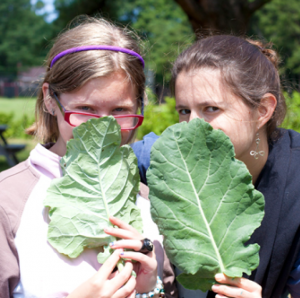This year I received a unique writing assignment. Inspired by the National Association of Elementary School Principals, who profiled two principals in Vermont who are strong supporters of afterschool programs, I decided to interview a few select Vermont principals with the goal of gathering information on what makes a stellar afterschool/principal partnership. Given that the depth of partnerships between afterschool programs and schools has been shown to improve student academic outcomes (Bennett, 2015)[1], this is an important topic for our organization and statewide community to consider.
To start, I reached out to afterschool directors for their nominations of outstanding principals who actively collaborate. From there, I chose four principals from across the state and attempted to capture a snapshot of different schools in Vermont. There’s a big city elementary school with diverse demographics, the larger rural elementary school pulling in students from a number of area towns, the middle school in a struggling post-industrial community, and the elementary school in a picturesque small college town.
All are principals schools with 21st Century Community Learning Center afterschool programs, which rely on federal grant funding distributed through a statewide grant competition for the purpose of providing high-quality afterschool and summer learning opportunities for students who attend schools where 40% or more of the students are from low-income families (free/reduced lunch assistance) and/or are approved for Title 1 status.
Any and all school-based afterschool program staff should ponder the following insights and perspectives from the principal’s office. These are hard-working, thoughtful, and inclusive principals who are committed to educating all students. Which is why they see afterschool and summer learning programs as being integral to their school systems and why their profiles are worth a read.
Recommendations and Lessons Learned:[2]
1) Effective Collaboration. Ask to attend school staff meetings; invite teachers to afterschool meetings.
2) Shared Vision. Afterschool programs can build on school values by creating programming that supports the social fabric of the school; likewise the principal needs to visit afterschool program to observe and learn how the afterschool program contributes to the growth of students. Personally invite the principal to visit and emphasize how your afterschool program contributes to the shared vision.
3) Relationship Building. Informal relationships take time and trust; invest in the development of these relationships particularly between school day and afterschool leaders. Think long-term and incremental.
4) Complementary Skills. Emphasize the role of afterschool programs in complementing school day academics vs. replicating classroom lessons; align with any social-emotional learning strategies the school is already utilizing.
Further Reading:
Collaborating to Build a New Day for Learning: A Toolkit for Principals, Afterschool, and Community Leaders (National Association of Elementary School Principals, 2010)
Leading After-School Learning Communities: What Principals Should Know and Be Able To Do (National Association of Elementary School Principals, 2006)
Building a Culture of Attendance: Schools and Afterschool Programs Together Can and Should Make a Difference (Expanding Minds and Opportunities, 2013)
Linking Schools and Afterschool Through Social and Emotional Learning (American Institutes for Research, 2015)
After the Last Bell: The Multiple Roles of Principal in School-Based Afterschool Programs (Afterschool Matters, 2007)
[1] Bennett, T.L. (2015). Examining levels of alignment between school and afterschool and associations on student academic achievement. Journal of Expanded Learning Opportunities, 1(2), 4-22.
[2] Based on Anthony, K. & Morra, J. (2016). Creating holistic partnerships between school and afterschool. Afterschool Matters, 24, 33-42. Connelly, G. & Young, P. (2013). More than just another “to-do” on the list: The benefits of strong school, principal, and afterschool/community partnerships. In T.K Peterson (Ed.), Expanding minds and opportunities: Leveraging the power of afterschool and summer learning for student success. Washington, DC: Collaborative Communications Group.





